17th International Conference on Modelling, Monitoring and Management of Air Pollution
![]() 20 - 22 July 2009
20 - 22 July 2009
Tallinn, Estonia
Overview
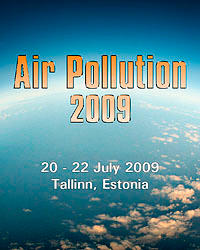
The 17th International Conference on Modelling, Monitoring and Management of Air Pollution was recently held in Tallinn (Air Pollution 2009). The Meeting was part of a very successful series of conferences started in Mexico (1993), which continued in Barcelona (1994); Halkidiki (1995); Cambridge, UK (2000); Ancona (2001); Segovia (2002); Catania (2003); Rhodes (2004); Cordoba (2005); New Forest (2006); Algarve (2007); and Skiathos (2008). All these meetings have attracted outstanding contributions from leading researchers from all over the world with all papers since 1993 now permanently stored in the WIT eLibrary (library.witpress.com).
Air Pollution is highly topical nowadays, due to the increase in the number of emission sources and the significance that good quality air has on human health. The complexity of these topics is increased by the fact that air pollution generated locally can have an impact on a regional and in some cases even on a global scale. The contaminants emitted in one place can quickly disperse through the atmosphere and industrial activities in one country can affect the air quality in another. More accurate and reliable predictive models are necessary, which can be used to assess the influence of one or several sources of pollution on various end points. The improvements are possible through achieving better quantification of emission rates and more accurate information on composition of pollutants of various forms, improving transport models on a regional scale which can include accurate predictors in local scale where necessary, enhancing the knowledge of the chemical reactions, transforming existing and creating new pollutants, deposition of particles and improving the understanding of the impact of separate pollutants and combinations of pollutants on human health and the environment.
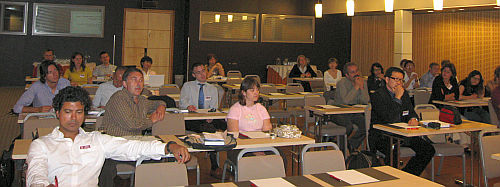
The technology constantly brings new products to the consumers and with this comes the possibility of creating new contaminants. Perhaps a good example is the emerging industry producing nanoparticles. Although nanoparticles have always existed in the environment, only recently have people become concerned with their effect upon human health due to the increasing quantities being produced. The history of new products, such as asbestos once was, shows that sometimes, whether one product represents a threat to human health, or a commodity, depends only upon our level of understanding about the product properties. This indicates that technological development will constantly demand research in the field of air pollution in order to better understand and prevent, or bring to acceptable levels, new pollution sources. The process of defining the acceptable levels is constantly demanding new research to understand the impact of long term exposure to various pollutants, or mixtures where separate components have synergistic effects. The improved knowledge of the effect of pollutants on human health forces periodic review of the regulations for air quality and emissions. Further research to improve, monitoring and detection technology is required in order to be able to verify that the current regulations for air quality are satisfied and to identify areas where further improvements are required.
The Air Pollution conference attempts to study some of those problems and to promote the exchange of information and discussions to arrive at practical solutions to resolve the air pollution problems facing our society.
Conference Sessions
The papers presented at the meeting addressed a wide range of topics covering:
- Air pollution modelling
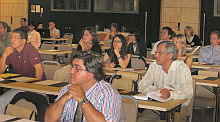 Air management and policy
Air management and policy- Emission studies
- Monitoring and measuring
- Aerosols and particles
- Air pollution effects and environmental health
- Global and regional studies
- Pollution effects and reduction
Opening Address
The meeting was opened by Professor Carlos Brebbia, Director of Wessex Institute of Technology (WIT) who referred to the conference and seminar series as fulfilling one of the most important objectives of WIT: the dissemination of advanced scientific information. The Air Pollution conference in particular has been most successful since its beginning in 1993 and has continuously attracted outstanding presentations. The meeting has also evolved over the years with a continuous development of new topics and younger researchers as well as those well established in their field.
Air Pollution continues to play a major role in our understanding of the causes of climate change and the associated greenhouse effect. The problem that may now be reaching the point of irreversibility cannot be resolved properly without a better knowledge of Air Pollution management and remediation.
Another important aspect of Air Pollution, Professor Brebbia said, is human health, a problem that is increasingly complex due to the constant development of new products and processes.
The conference discussed all these aspects and investigated possible solutions.
Keynote Addresses
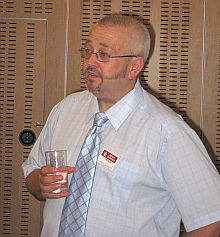 There were a number of keynote addresses by well known colleagues representing different research groups:
There were a number of keynote addresses by well known colleagues representing different research groups:
- “Air quality in street canyons: a case study” by F. Patania, University of Catania, Italy
- “Application of mineral magnetic concentration measurements as a particle size proxy for urban road deposited sediments” by C A Booth, University of Wolverhampton, UK
- “Effects of road traffic scenarios on human exposure to air pollution” by C Borrego, University of Aveiro, Portugal
- “Improved modelling experiment for elevated PM10 and PM2.5 concentrations in Europe with MM5-CMAQ and WRF/CHEM” by R San Jose, Technical University of Madrid, Spain
- “Use of CALPUFF and CAMx models in regional air quality planning: Italy case studies” by C Trozzi, Techne Consulting SRL, Italy
Social Events
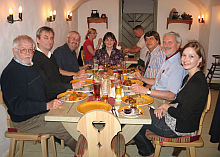 The delegates had ample opportunities for interacting as the conference took place in a hotel with excellent conference and other facilities. The organisers provided complimentary lunches in order to increase contact among the participants. Members of the International Scientific Advisory Committee met over dinner to discuss future meetings and in particular the location for the 2011 conference.
The delegates had ample opportunities for interacting as the conference took place in a hotel with excellent conference and other facilities. The organisers provided complimentary lunches in order to increase contact among the participants. Members of the International Scientific Advisory Committee met over dinner to discuss future meetings and in particular the location for the 2011 conference.
The conference dinner took place in a renowned restaurant in the main square of the old city of Tallinn. The room had a panoramic view of the famous Rathaus where the 2006 Prigogine Award Ceremony was held. The building where the restaurant is located is one of the oldest in the square and is well preserved, showing the interior of the house of an affluent citizen of Tallinn in the 17th Century. The excellent cuisine was complemented by good wines and local drinks. At the end of the evening a guitar and violin ensemble played a concert consisting of Estonian and regional music.
The next conference in the series will take place on the Greek island of Kos from 21 to 23 June 2010.
Publication of Papers

The proceedings of Air Pollution XVII, 480pp (Print ISBN: 1-84564-195-5; Online ISBN: 1-84564-372-0; Print ISSN: 1746-448X) are available from WIT Press priced at £182/US$328/€237. Orders can be placed by telephone: +44 (0) 238 029 3223, fax: +44 (0) 238 029 2853, e-mail: This email address is being protected from spambots. You need JavaScript enabled to view it. or via the WIT Press web site at www.witpress.com.
Papers from the conference will also be hosted online at the WIT eLibrary as Volume 123 of WIT Transactions on Ecology and the Environment (Online ISSN: 1743-3541). For more details visit the WIT eLibrary at library.witpress.com.


 Wessex Institute
Wessex Institute